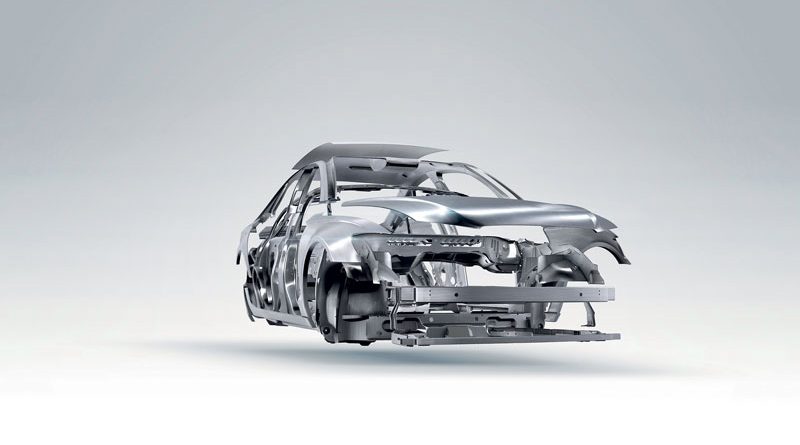Next Generation Alloys for Automotive Extrusions
The offering of new alloys, developed to create extrusion components meant for critical applications on cars and light vehicles, is growing
by Giuseppe Giordano
Aluminium extrusions are increasingly valued to create structural parts of cars and light transportation vehicles. In 2017 the composition of aluminium semis per car showed an average presence of extrusions adding up to 13%; it should be noted that foundry castings keep up a strong presence, roughly three times more than rolled products and almost five times more than extrusions (Figure 1).
In a modern car, extrusions are used above all for the construction of the space frame, which combines extrusions whose function is ensuring passenger safety, structural extrusions and extrusions which may be deformed in case of a crash. Operating with chemical compositions close to the limits of registered alloys, it is possible to define special alloys optimized for the various final applications, such as, for structural components derived from extrusions. Such is the case with alloy HS 400 developed by Hydro Aluminium, presented in A&L’s issue 1/2019. In Table 1 the composition of HS 400 and the tensile properties in state T6 are shown and compared with data relative to standard alloy 6082.
6xxx alloys may also offer combinations of composition and heat treatment to obtain materials capable of absorbing the impact energy in case of a crash. Figure 2 shows how it is possible to have a 6xxx alloy with good extrusion properties and excellent tensile characteristics (HSA6 alloy by Constellium) comparable in terms of extrusion capability to ENAW 6082 and having tensile properties similar to high-strength 7xxx alloys. In such conditions it is possible to obtain optimal shapes for crash absorbers, capable of absorbing high energy levels.
Precision extrusions: micro channel MPE profiles for heat exchange systems
A recent application of extrusions within the heat exchange system domain is the one of MPE (Multi Port Extrusions) micro channel profiles. Micro channel profiles are characterized by excellent conductivity, optimal corrosion resistance, high resistance to pressure and high economic value at the end of the life cycle. On account of these properties, the product is very interesting for automotive applications, even because they offer designers the possibility of creating complex heat exchange circuits within limited floor spaces and with a much lighter weight with respect to other solutions. The flat and rectangular extruded tube includes different channels which ensure a greater heat transfer thanks to the grater ratio between surface and volume. From the standpoint of the alloys used, micro channels are made out of traditional alloys with high extrusion properties. The main properties of three alloys from different families commonly used in heat exchange applications are shown below:
• ENAW 1050 AND SIMILAR ALLOYS IN THE 1XXX FAMILY
These alloys do not increase their mechanical properties following heat treatment and are normally used in heat transfer applications in the automotive and energy industries. The 1050 alloy offers an excellent corrosion resistance and a thermal conductivity which is superior compared to more complex alloys.
• ENAW 3003 AND SIMILAR ALLOYS IN THE 3XXX FAMILY
These alloys show excellent corrosion resistance, machining and welding properties. 3003/3103 alloys may be cold machined and are generally used in the HVACR (Heating Ventilation Air Conditioning Refrigeration) segment and in the automotive industry. They show an excellent corrosion resistance and superior mechanical properties with respect to alloys in the 1xxx series. Applications include, for instance, car radiators and evaporators for air conditioners.
• ENAW 5005 AND SIMILAR 5XXX ALLOYS WITH SMALL-MEDIUM AMOUNTS OF Mg
These alloys do not increase their mechanical properties following heat treatment and are normally used in heat transfer applications in the automotive, HVAC and energy industries.
These alloys are easier to weld compared to alloys in the 6xxx series.
The ENAW 5083 alloy with medium Mg content also offers an excellent corrosion resistance in salt water and is therefore particularly suitable even to create the structure of hulls in the nautical segment.

